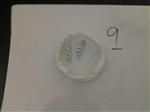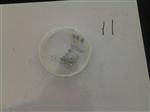-
Chemistry modelling 04- describing substances
Unit 4 objectives (updated 2015)This U4 powerpoint (2013-2014) includes some of the slides we have viewed in class, together with others you may want to review independently.This U4 slideshow 2015 includes some additional slides we have viewed in class. Both of these slide presentations will be useful as you review the material from this unit.chemteam.info provides a number of problems and tutorials related to this unit.Unit 4 introduces the idea of chemical formula writing. chemteam.info has naming and formula writing tutorials as well.Distillation resources:After reviewing these resources, students should be able to explain the difference between simple distillation and fractional distillation. This information should be sufficiently deep that students can do any of the following:-identify, name, sketch and describe the purpose of the equipment used in the separation.-identify the physical property of matter used in the separation.-identify additional equipment which is used to improve the quality and purity during a fractional separation. Show this in your drawing.-annotate your sketch with a series of particle diagrams illustrating the material at a particle scale, at several locations along the fractionating column. Evaluate your particle drawings: how do they show the relative kinetic energy of the particles at each height in the column? The composition of the mixture at each height? The phase(s) of matter of each of the mixture components at each height?
-Which method would be used to separate salt and water? Which method would be used to separate volatile oils from a plant extract? Why is simple distillation not useful for separations of materials with boiling temperatures within 5 degrees? Student should give other examples of mixtures which might be appropriately separated by simple distillation, or which might require fractional distillation.-Compare and contrast the equipment used for continuous distillation in the petroleum industry (reference 5, above) with the table top equipment we might use to achieve a high quality fractional distillation in the classroom (reference 4a, 4b, above). In what sense are both of these systems "fractional distillation" rather than "simple distillation"Ring of Truth combining volumes of hydrogen and oxygen (Video shows the decomposition of water with a Hoffman's Apparatus, and also the reverse reaction, the combination of hydrogen and oxygen)Other useful sitesDalton's Playhouse Application Complete all of the activities at Dalton's playhouse together with the Dalton's playhouse worksheet you've been provided in class.Together with this application, complete the reading "From Democritus to Dalton". Take good notes, complete all of the self-assessment questions, and complete the self-assessment quiz at the end of the assignment.To practice formula writing, particle diagrams are represented here as combinations of three basic elements: pins (P), red beads (Bd) and white blocks (Bl). If the photos are two fuzzy or difficult to interpret, ask to see the actual models during class. Given particle diagrams like these (or ones constructed from other symbols or material) you should be able to do the following:Write a correct formulaCharacterize the set as "pure" or mixture"Characterize each type of particle as "compound or element"Characterize each type of particle as "molecular or atomic"From a given formula, you should be able to reconstruct the particle diagram.


2 PBl2 + 2 Bl
3 PBd2 5 Bd 


3 PBl + 2 PBd2 4 PBdBl2 6 P2 


4 PBdBl + 2 P + 1 Bd 2 PBl3 4 PBdBl + 4 Bl 


3 P4 3 PBd + 3 Bd 2 Bl + 3 Bd 

PBl2 + PBd2 2 PBdBl
Select a School...

